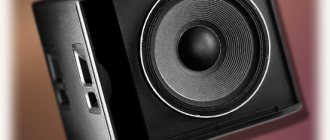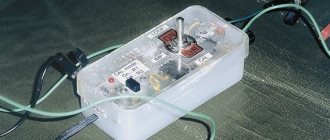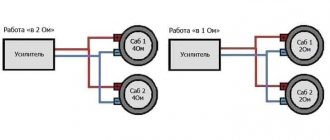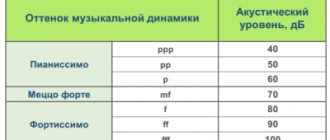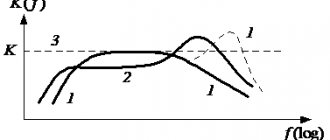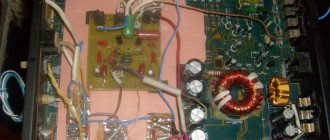What is RMS power
RMS comes from the English term Root Mean Square, which means root mean square , and as you might guess from the name, it is actually a mathematical term. This wattage refers to how much continuous power the speaker can handle. without sound distortion , and you should know how to distinguish it from the peak power, which in most cases is twice this value.
For example, a speaker with an RMS rating of 30 Watts but a peak power of 60 Watts means that the speaker has an average power of 30 Watts but is capable of emitting 60 Watt bursts from time to time, and yet most likely the sound emitted at that power is distorted . or noisy.
We then get that RMS indicates the average power level without distortion. This is the first important "wattage" you need to know before selecting speakers because if the speaker is driven above this wattage rating, its diaphragm may be permanently damaged as the speaker will not be able to dissipate the heat generated. thanks to the electric current circulating through its coil, capable of melting the insulator covering the copper wire of its connections.
Effect of total output power on volume
Oddly enough, the high power of the equipment does not always mean that it will play loudly and “meaty”. When choosing speakers for your computer, you should remember that watts, roughly speaking, is the amount of energy consumed by the equipment.
Depending on the efficiency of the system (and it can sometimes be extremely low), the final volume can be significantly adjusted.
Sound volume is a subjective characteristic. It is measured by intensity, which is proportional to the square of the sound pressure amplitude. It is affected by the sensitivity of the human ear.
Different people may perceive the same frequency ranges differently. In addition, sensitivity decreases with age.
Total power output is not the only parameter that affects sound pressure. The volume of the system as a whole also depends on the sensitivity of the speakers and the power of the amplifier.
The lower the sensitivity of the speaker, the more powerful the amplifier will be required to activate it.
Musical power
To better understand the term "speaker power", we also need to know the so-called "music power", that is, the electrical power it is capable of supporting with a pink noise input signal ( Pink noise , a sound that simulates a musical theme) without permanent damage. The test typically lasts one second and is repeated 60 times at one minute intervals.
The resulting value is based on the speakers' nominal impedance, so the result is subjective and unreliable. In this case, if you see a manufacturer advertising their speakers with "musical power" or just power, don't trust them because this is a subjective value that does not provide significant value in determining the power of the speakers.
Installers website
The variety of standards used to measure amplifier output power and speaker power can be confusing for anyone. Here is a block amplifier from a reputable company with 35 W per channel, and here is a cheap music center with a 1000 W sticker. Such a comparison will clearly cause confusion among a potential buyer. It's time to turn to standards...
Power standards (DIN,RMS,PMPO)
Rated power - power at the middle position of the amplifier volume control, at which other parameters of the device correspond to those stated in the technical description. In Europe, two power parameters are used - nominal and sinusoidal. This is reflected in the names of speaker systems and speaker designations. Moreover, if previously the rated power was mainly used, now more often it is sinusoidal. For example, the 35AC speakers were subsequently designated S-90 (35 W rated power, 90 W sine wave power) Sine wave power is the power at which the amplifier or speaker can operate for an extended period of time with a real music signal without physical damage. Usually 2 - 3 times higher than nominal. Western standards are broader, typically using DIN, RMS and PMPO. DIN - Roughly equivalent to sine wave power - the power at which an amplifier or speaker can be operated for an extended period of time with a pink noise signal without physical damage. RMS (Rated Maxmum Sinusoidal) - Maximum (limit) sinusoidal power - the power at which an amplifier or speaker can operate for one hour with a real music signal without physical damage. Typically 20 - 25 percent higher than DIN. PMPO (Peek Music Power Output) - Musical power (exorbitant :-)) - the power that the speaker speaker can withstand for 1-2 seconds on a low frequency signal (about 200 Hz) without physical damage. Typically 10 - 20 times higher than DIN. As a rule, serious Western manufacturers indicate the power of their products in DIN, and manufacturers of cheap music centers and computer speakers in PMPO.
Features of standards describing power in audio engineering
Many people have sometimes had to wonder what exactly the power means, which is given in one form or another in the passports of acoustic systems and sound reinforcement equipment. There are surprisingly few materials on this topic on the Internet and in printed publications, and there are also few clear answers to questions.
International standards
RMS (Root Mean Squared) - root mean square value of power limited by specified nonlinear distortions. Power is measured with a sine wave at 1 kHz when 10% THD is reached. It is calculated as the product of the rms values of voltage and current with an equivalent amount of heat created by direct current. That is, this power is numerically equal to the square root of the product of the squares of the average voltage and current values. For a sinusoidal signal, the root mean square value is V2 times less than the amplitude value (x 0.707). In general, this is a virtual quantity; the term “rms”, strictly speaking, can be applied to voltage or current, but not to power. A well-known analogue is the effective value (everyone knows it for the AC power supply network - these are the same 220 V). I will try to explain why this concept is not very informative for describing sound characteristics. RMS power is the work that produces. That is, it makes sense in electrical engineering. And it does not necessarily refer to a sinusoid. In the case of musical signals, we hear loud sounds better than weak ones. And the hearing organs are affected more by amplitude values, rather than by root-mean-square values. That is, volume is not equivalent to power. Therefore, root-mean-square values make sense in an electric meter, but amplitude values make sense in music. An even more populist example is frequency response. Frequency response dips are less noticeable than peaks. That is, loud sounds are more informative than quiet ones, and the average value will say little. Thus, the RMS standard was one of the less successful attempts to describe the parameters of audio equipment that do not reflect loudness as a value. In amplifiers and acoustics, this parameter also, in fact, has a very limited use - an amplifier that produces 10% distortion not at maximum power (when clipping occurs, limiting the amplitude of the amplified signal with specific dynamic distortions arising), still look. Before reaching maximum power, the distortion of transistor amplifiers, for example, often does not exceed hundredths of a percent, and even higher they increase sharply (abnormal mode). Many acoustic systems can already fail if operated for a long time at this level of distortion. For very cheap equipment, another value is indicated - PMPO, a completely meaningless and not standardized parameter by anyone, which means that our Chinese friends measure it as God pleases. More precisely, in parrots, each in its own way. PMPO values often exceed nominal values by up to a factor of 20.
PMPO (Peak Music Power Output) is the peak short-term musical power, a value that means the maximum achievable peak value of the signal, regardless of distortion, in general in a minimum period of time (usually 10 mS, but generally not standardized). As follows from the description, the parameter is even more virtual and meaningless in practical use. I advise you not to take these values seriously and not rely on them. If you happen to buy equipment with power parameters indicated only as PMPO, then the only advice is to listen for yourself and determine whether it suits you or not.
DIN 45500 is a set of generally accepted IEEE standards that describe various sound amplification characteristics of equipment in a more reliable manner.
DIN POWER - the value of the power supplied to the actual load (for an amplifier) or supplied (to speakers), limited by nonlinear distortions. It is measured by applying a signal with a frequency of 1 kHz to the device input for 10 minutes. Power is measured when it reaches 1% THD (non-linear distortion). Strictly speaking, there are other types of measurements, for example, DIN MUSIC POWER, which describes the power of a musical signal. Typically the value quoted as DIN music is higher than that quoted as DIN.
Domestic standards
Rated power is an artificial value; it leaves freedom of choice to the manufacturer. The designer is free to specify the rated power value that corresponds to the most advantageous value of nonlinear distortion. Typically, the indicated power was adjusted to the GOST requirements for the complexity class with the best combination of measured characteristics. Indicated for both speakers and amplifiers. Sometimes this led to paradoxes - with step-type distortion occurring in class AB amplifiers at low volume levels, the level of distortion could decrease when the signal output power was increased to the nominal one. In this way, record rated characteristics were achieved in the amplifier data sheets, with an extremely low level of distortion at a high rated power of the amplifier. Whereas the highest statistical density of a musical signal lies in the amplitude range of 5-15% of the maximum power of the amplifier. This is probably why Russian amplifiers were noticeably inferior in hearing to Western amplifiers, whose optimum distortion could be at medium volume levels, while in the USSR there was a race for a minimum of harmonic and sometimes intermodulation distortion at any cost at one nominal (almost maximum) power level. Nameplate noise power is electrical power limited solely by thermal and mechanical damage (for example: slipping of the turns of the voice coil due to overheating, burnout of conductors in places of bending or soldering, breakage of flexible wires, etc.) when pink noise is supplied through the correction circuit for 100 hours. Maximum short-term power is the electrical power that the speakers can withstand without damage (checked by the absence of rattling) for a short period of time. Pink noise is used as a test signal. The signal is sent to the speaker for 2 seconds. Tests are carried out 60 times at intervals of 1 minute. This type of power makes it possible to judge the short-term overloads that a loudspeaker can withstand in situations that arise during operation. Maximum long-term power is the electrical power that the speakers can withstand without damage for 1 minute. The tests are repeated 10 times with an interval of 2 minutes. The test signal is the same. The maximum long-term power is determined by a violation of the thermal strength of the speakers (sliding of the turns of the voice coil, etc.).
General terminology
Pink noise is a group of signals with a random character and a uniform spectral density of frequency distribution, decreasing with increasing frequency with a drop of 3 dB per octave over the entire measurement range, with the dependence of the average level on frequency in the form of 1/f. Pink noise has constant (over time) energy in any part of the frequency band. White noise is a group of signals with a random character and a uniform and constant spectral frequency distribution density. White noise has the same energy at any frequency range. An octave is a musical frequency band, the ratio of the extreme frequencies of which is equal to 2. Electrical power Power dissipated by an ohmic equivalent resistance equal in value to the nominal electrical resistance of the speaker, at a voltage equal to the voltage at the terminals of the speaker. That is, at a resistance that emulates a real load under the same conditions.
Peak Power (PMPO)
Other manufacturers advertise their speakers using peak power ratings. The term PMPO comes from the English "Peak Music Power Output", this is the maximum power of the music output and refers to the maximum power that a speaker is capable of supporting while being able to dissipate its heat, i.e. without damaging it. , As we mentioned earlier and since it is based on musical power, it is again a value that we should not trust because it is not only subjective, it cannot be compared with anything and is therefore completely irrelevant.
For example, a manufacturer might advertise speakers with a PMPO power rating of 100W, but then with an RMS power rating of only 10W. Therefore, this is information that is simply a marketing strategy to increase product performance, but is neither real nor reliable.
Let's summarize
RMS and peak power play an important role in your audio system, and they are vital when comparing your speakers to amplifiers or subwoofers. When matching speakers or subwoofers to amplifiers, you should compare either their RMS values or their peak values.
Therefore, there should be no confusion when comparing peak and RMS values. This will ensure you get the most out of each component. If the power outputs of the devices do not match each other, the components can overheat and create other problems. However, it is important to emphasize that you should always use RMS ratings, not peak power, when comparing and selecting equipment.
In some online stores, the type of speaker power and its value are not indicated. In this case, it is better to look at the values of maximum (peak) and RMS power on the manufacturer’s official website.
A short review of the top speakers of 2022:
